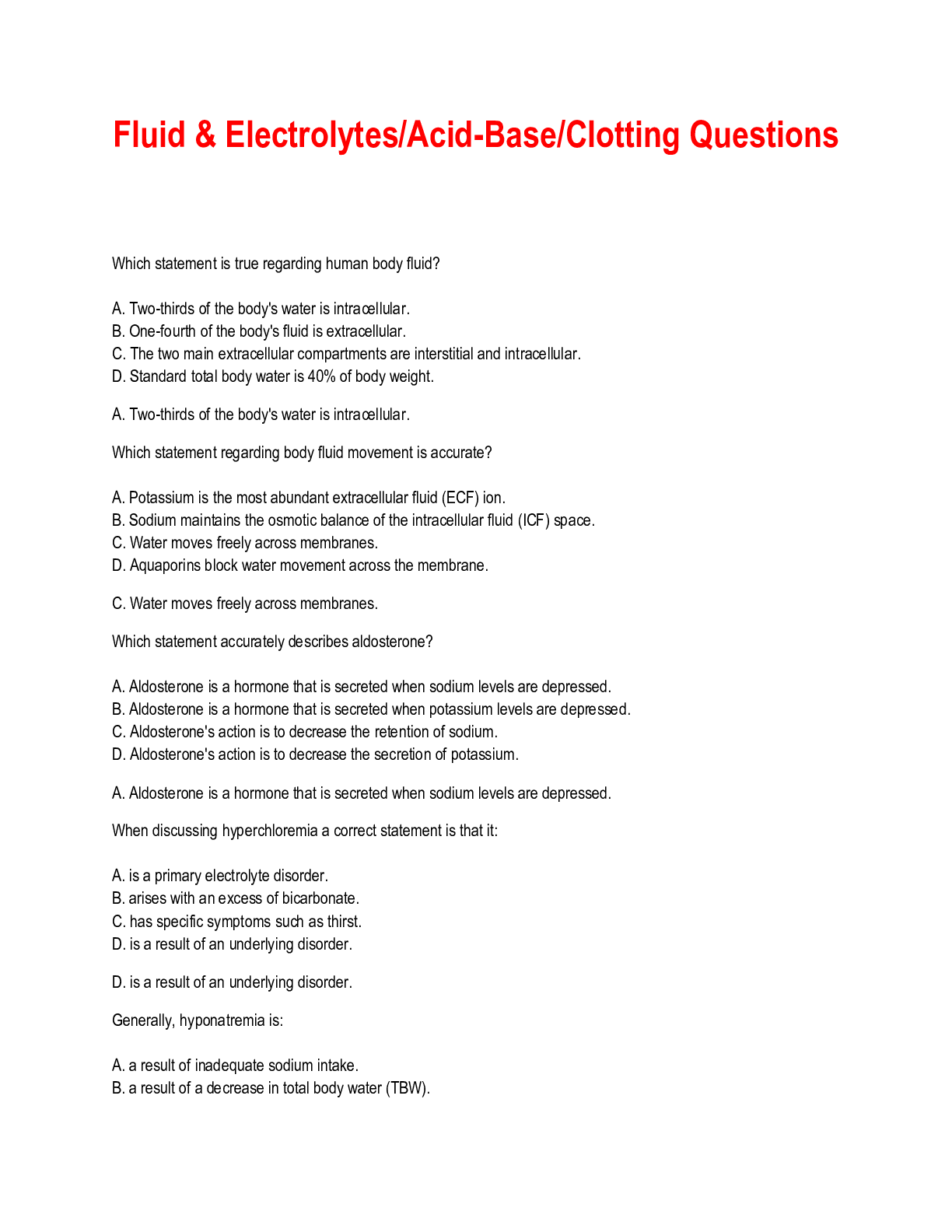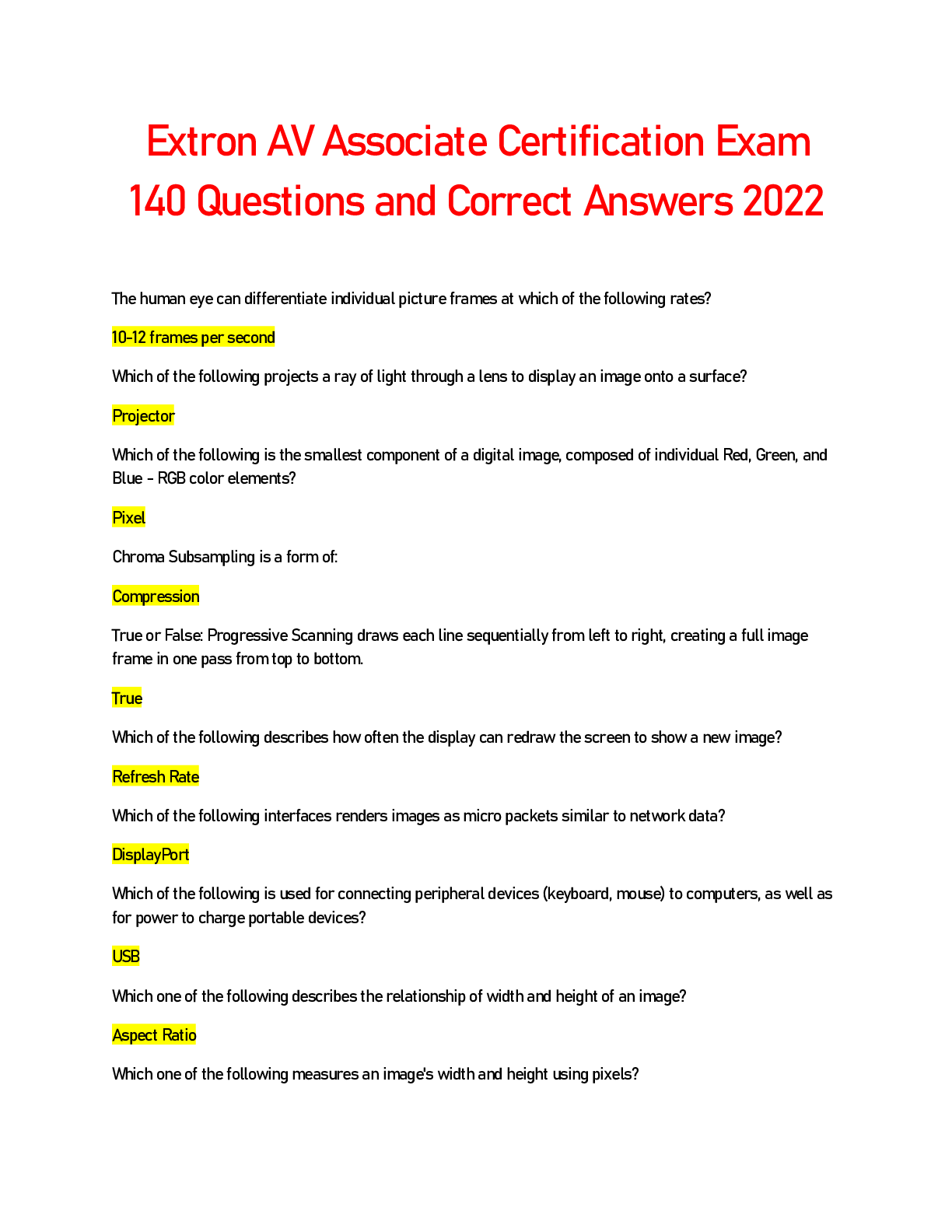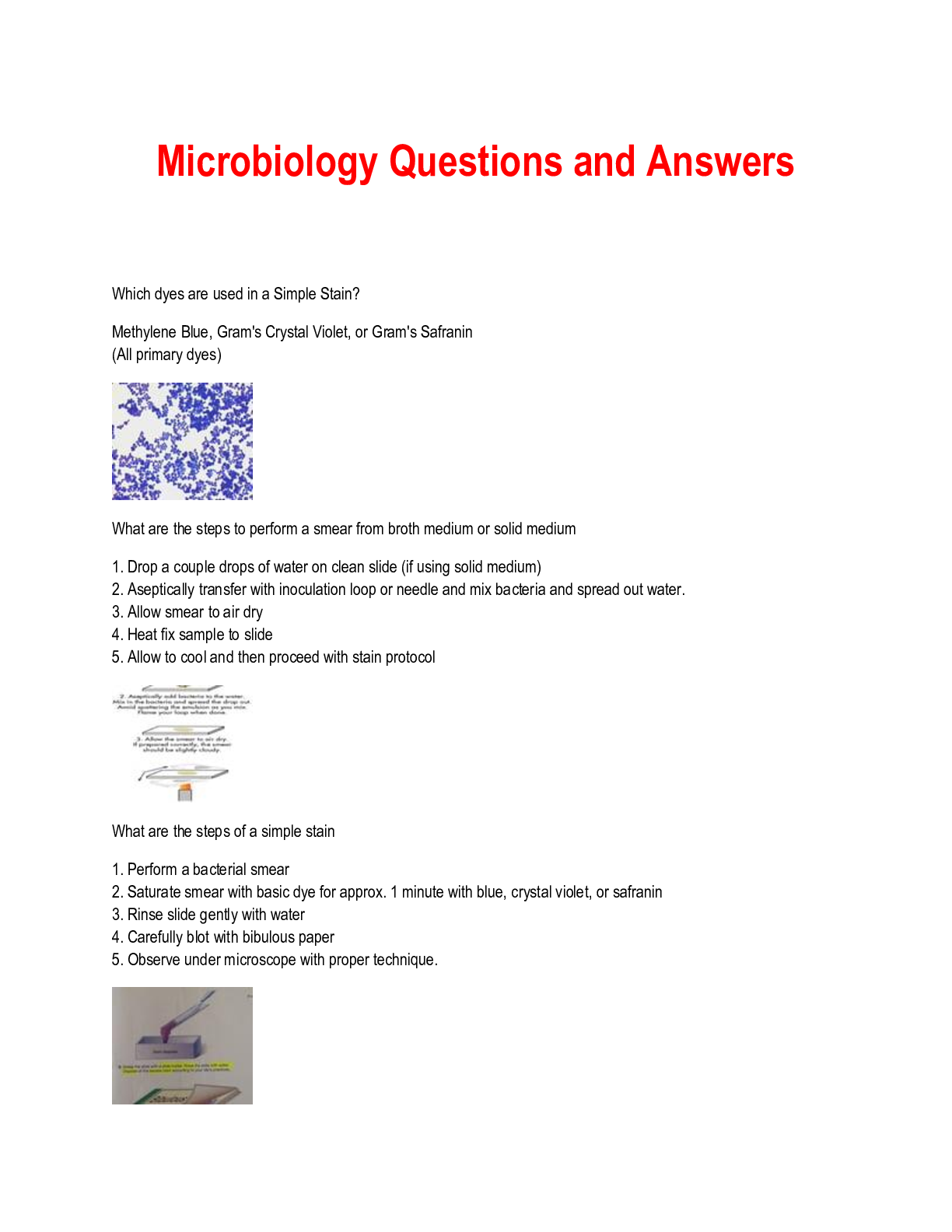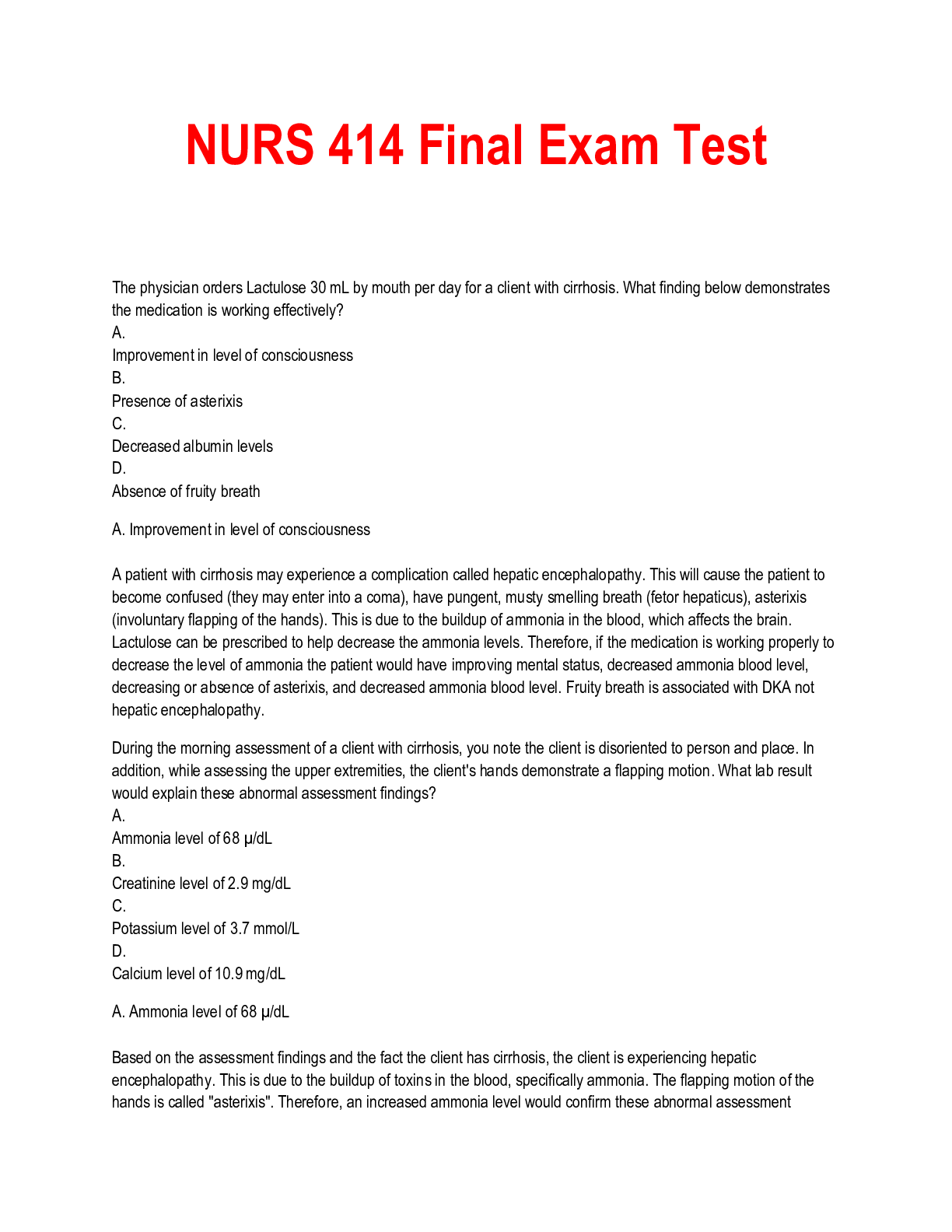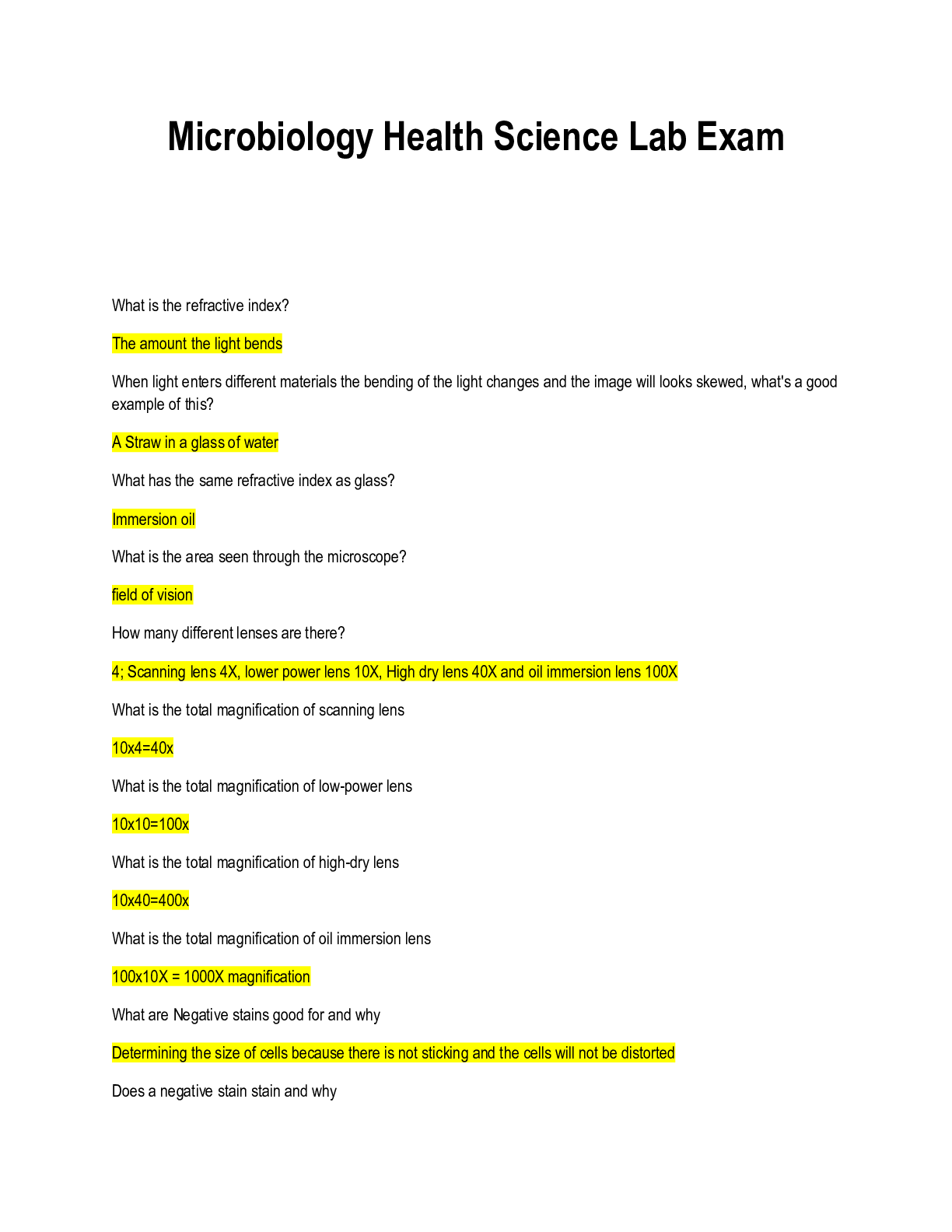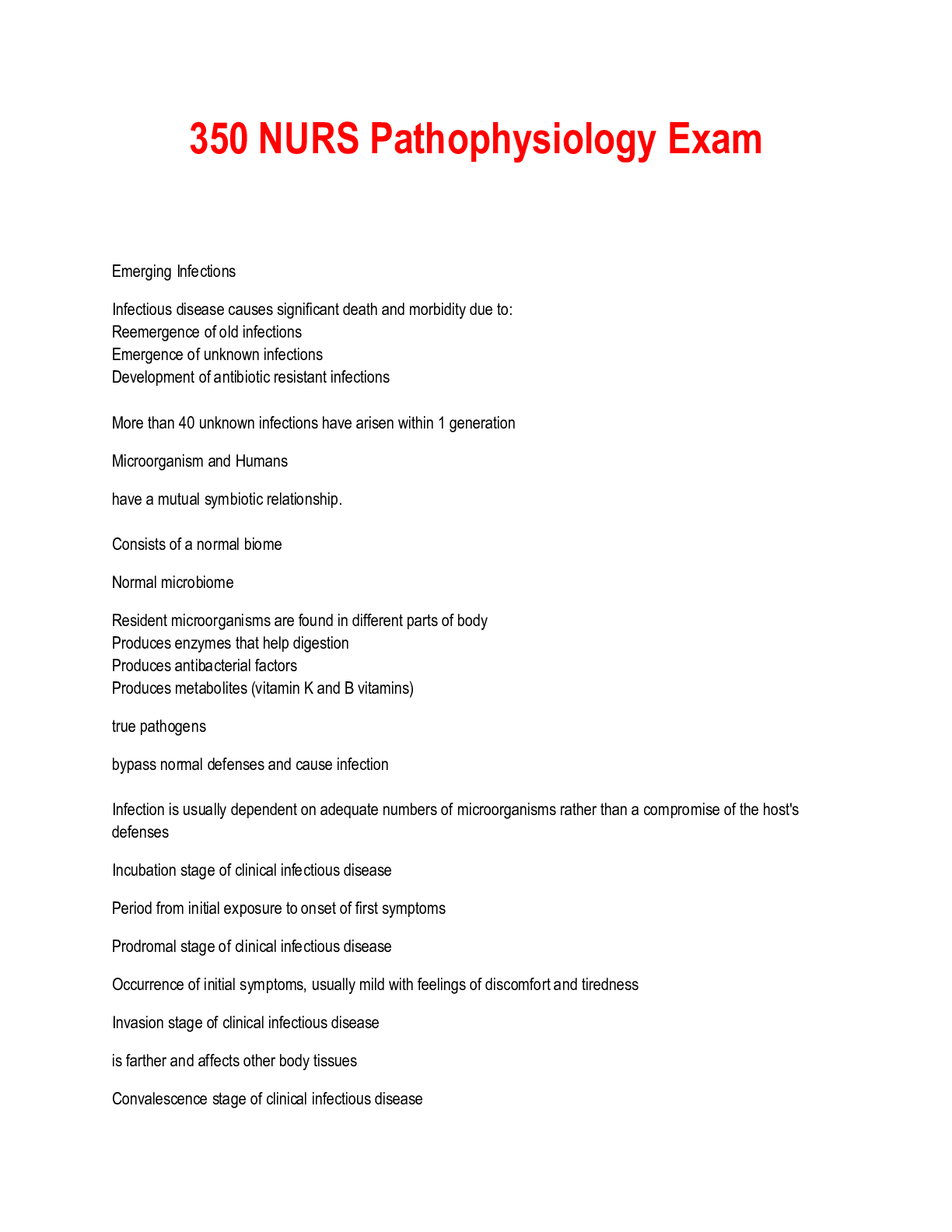Micro Biology > EXAM > Brock Microbiology Chapters 1-5 Exam (All)
Brock Microbiology Chapters 1-5 Exam
Document Content and Description Below
Brock Microbiology Chapters 1-5 Exam What are the two major themes of microbiology and how do they differ in focus? Microbiology is both a basic biological science (a science of discovery) and a... n applied biological science (a science of solving problems). Knowledge of the world around us is gained through basic research, and this knowledge can often be applied to resolve challenges that face our society or threaten human welfare. How can prokaryotic and eukaryotic cells be distinguished? List the major activities carried out by cells, and in each case, describe why the activity occurs. The Bacteria and Archaea consist of prokaryotic, generally free-living cells. The Eukarya are eukaryotic cells (or multicellular organisms consisting of eukaryotic cells) that are generally significantly larger than prokaryotes and have a greater degree of complexity with a defined nucleus and membrane-bound organelles. Cells function as machines in a chemical sense, carrying out metabolic reactions essential for their integrity and survival. However, information from coding devices is also required so that metabolic events may be initiated or deferred at the appropriate time. Translation of the genetic information encoded in DNA requires ribosomes to coordinate the interaction of messenger RNA with the other components required to assemble the protein product, transfer RNA, and amino acids. Though catalytic and coding functions of cells differ (one specifies what can occur, the other specifies when), neither can function without the other within the confines of the cell boundary. Thus, order is maintained against a thermodynamically unfavorable gradient. A living cell must possess both. Why did the evolution of cyanobacteria change Earth forever? How many domains of life are there and how are they related? The evolution of cyanobacteria had a profound effect on the biology of the planet, as it resulted in the oxygenation of the atmosphere. For the 2 billion years before this event, only single-celled organisms capable of anaerobic metabolisms inhabited the planet. The evolution of a metabolism that could transfer electrons extracted from reduced organic carbon molecules to O2 as an electron acceptor (i.e., aerobic respiration) permitted the generation of much larger amounts of ATP (due to the highly electropositive reduction potential of O2, described in Chapter 3) and the eventual evolution of the eukaryotic cell and multicellularity. Three domains of life exist today: the Bacteria, Archaea, and Eukarya. It is generally believed that all three domains are derived from a single ancestral cell, the last universal common ancestor (LUCA). What is an ecosystem? What effects can microorganisms have on their ecosystems? An ecosystem consists of the biotic factors (living organisms) together with the abiotic factors (physical and chemical nonliving constituents) of a habitat in the environment. In nature, microorganisms almost never occur in pure culture; they occur as mixed populations composing a larger microbial community. The microorganisms in an ecosystem use nutrients from the environment and excrete waste products of their metabolisms into the environment. The life processes of various microorganisms significantly contribute to primary production, decomposition, and nutrient cycling in an ecosystem. How would you convince a friend that microorganisms are much more than just agents of disease? Microorganisms carry out many important functions, with only a small percentage of bacteria (<1%) capable of causing disease. In fact, the human body has far more bacterial cells on and in it than human cells, and while a small fraction of these microorganisms are potentially pathogenic, the vast majority are commensal species essential for maintaining proper human health. In addition, some bacteria fix nitrogen (N2) and are thus important in agriculture. Others are important in food and beverage production. Most microorganisms play crucial ecological roles in the environment. For what contributions are Robert Hooke and Antoni van Leeuwenhoek most remembered in microbiology? What time period were these scientists active? Robert Hooke was the first to observe and describe microorganisms while studying the fruiting structures of molds (fungi). Antoni van Leeuwenhoek was the first person to observe bacteria using microscopes of his own design and build. Both researchers were active and accomplished their most influential work in the late 1600s. Explain the principle behind the Pasteur flask in studies on spontaneous generation. Why were the results of this experiment inconsistent with the theory of spontaneous generation? Pasteur's experiments using swan-necked flasks silenced the objection of vitalists who claimed that sealing the mouth of a flask blocked the availability of open air, which they viewed as being essential for spontaneous generation (they were entirely unaware of the existence of anaerobes). Pasteur definitively showed that, even in open air, putrefaction of the heated broth did not occur unless the flask was tipped such that the broth came in contact with dust particles trapped in the neck of the flask, thus proving that the microorganisms that contaminated the broth were carried in the air. What is a pure culture and how can one be obtained? Why are pure cultures important for medical microbiology and other areas of microbiology? A pure culture is a culture that consists of only one type of microorganism. The most common method of obtaining pure cultures is by the isolation of single colonies on solid growth media. Pure cultures may be used to determine the specific effect an organism has on its environment. For example, Koch and others used pure cultures to determine the causative agents for many diseases. What are Koch's postulates and how did they influence the development of microbiology? Why are Koch's postulates still relevant today? Koch's postulates are a set of criteria for proving that a specific type of microorganism causes a specific disease. The main points are as follows: (1) The suspected microorganism must be present in all cases of disease and not present in healthy individuals; (2) the organism must be cultivated from diseased individuals and isolated in pure culture; (3) inoculation of a healthy individual with organisms from the pure culture must initiate disease in susceptible animals; and (4) the organism should be re-isolated from these experimental animals in pure culture and be identified as the same infecting organism as that found in the original diseased animal. Investigators still use these postulates as a guide to determine the causative agents of diseases and for developing successful treatments for the prevention and cure of many infectious diseases. [Show More]
Last updated: 1 year ago
Preview 1 out of 23 pages
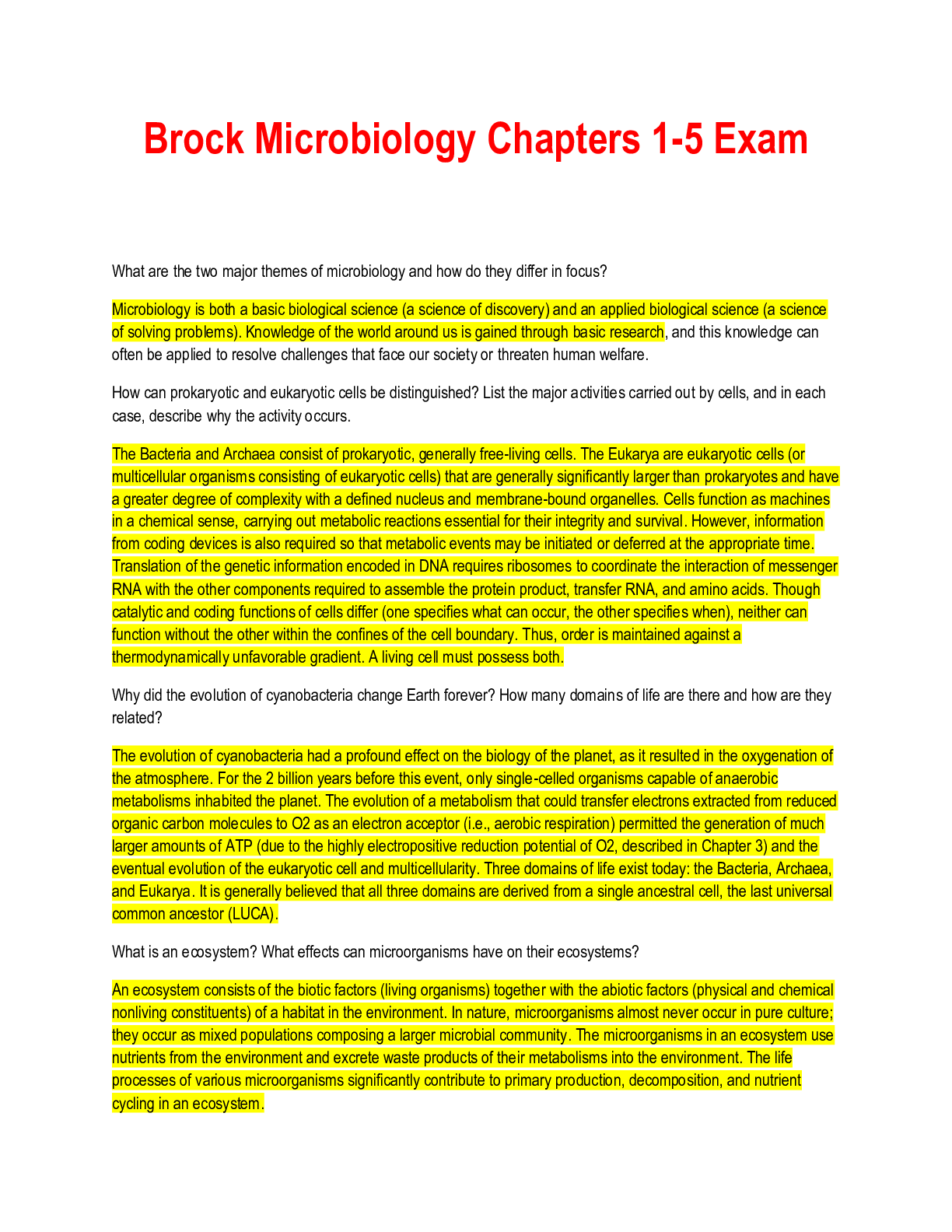
Buy this document to get the full access instantly
Instant Download Access after purchase
Add to cartInstant download
We Accept:

Reviews( 0 )
$10.00
Document information
Connected school, study & course
About the document
Uploaded On
Nov 07, 2022
Number of pages
23
Written in
Additional information
This document has been written for:
Uploaded
Nov 07, 2022
Downloads
0
Views
35

